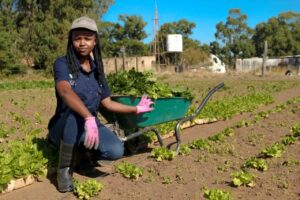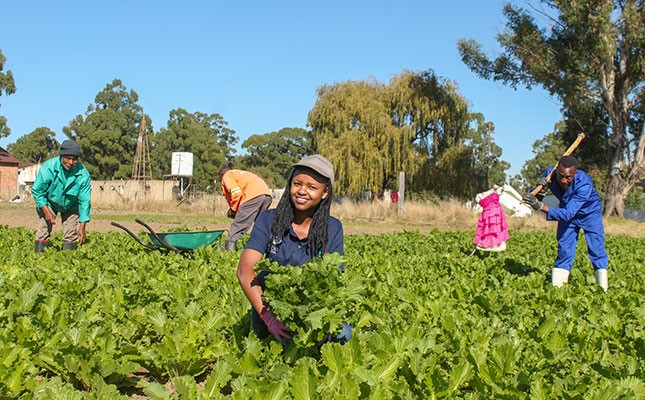Farming – It is a fact that healthy soil is rich in organic matter, as well as microbes that break down this organic matter, causing the release of nutrients into the soil in a form that can be assimilated by plants. If the soil is healthy, the farmer will be less reliant on fertiliser.

Aron Kole, managing director of agricultural services company FarmSol, stresses that by building up soil health, farmers are investing in their future harvests, as well as future generations. “Farming is a long-term investment in the feeding of multiple generations. This can only be achieved if the soil is protected by working on it sustainably,” he says.
FarmSol helps to commercialise emerging farmers by providing them with technical support, as well as sourcing agricultural production loans to enable them to grow grain crops. “Funders of these loans want to see that their investments are having a positive impact on the environment, and in this regard smallholder farmers can make a crucial contribution to sustainable agriculture,” adds Kole.
And while producers who farm on rented land might not feel inspired to invest in soil that isn’t theirs, Minky Kgopa, who farms maize and sunflower near Kaalpan in North West, does exactly that. “The short-term rental of farmland can be limiting and discouraging when it comes to caring for the soil, but healthy soil leads to healthy crops and better yields. Soil health is as vital to crops as oxygen is to humans,” she emphasises.
Kgopa started implementing regenerative agriculture (RA) principles in 2019 on her 110ha of rented land, and has already noticed the difference. “The camp on which we left crop residue from the previous season showed better water retention than the camp that was left bare,” she explains.
Cover farming crops and regenerative grazing
With no-till systems, plant residue is left on the soil, leading to improved water infiltration and a reduction in the loss of soil to wind erosion. No-till is therefore a step towards RA, but to optimise the regeneration of their soil, farmers are encouraged to add organic matter to it.
In addition, planting cover crops and incorporating livestock farming can help to reinvigorate the biology of the soil. Cover crops such as tillage radish aerate the soil and reduce compaction, while cover crop mixes that contain legumes, such as clover and vetch, also attract beneficial insects, can be used for animal feed, and help fix atmospheric nitrogen in the soil for use by the following crop.
An important aspect of RA is regenerative grazing, also referred to as adaptive multi-paddock (AMP) grazing. Here, large numbers of livestock graze small areas for short periods. With such a high stocking density, the cattle crush the weeds effectively and scatter the manure, thereby fertilising the soil. And because the grazing period is brief, the cover crops are grazed down by less than 50%, which means they don’t lose too many roots and can therefore recover far faster.
Advantages
Major effects of RA are not usually obvious in the first year, as most of the important work is taking place within the soil. Greater levels of biodiversity both above and beneath the soil surface bring about new cycles of insect pest and predator populations, as well as nutrient assimilation in plants. The structure of the soil is also improved and, as a result, so is its water-holding capacity, which reduces the leaching of nutrients. This, in turn, lowers the input costs of fertiliser and water.
On a social level, small-scale farmers are learning about RA from commercial producers at farmers’ days, and this is helping to improve rural development. RA nevertheless comes with its own set of challenges. One of these is the almost complete lack of government incentives for it in South Africa. Farmers who are keen to improve soil health must forge ahead themselves. Rosenberg therefore believes that by collaborating with and supporting one another, both small-scale and commercial producers will be better equipped to introduce RA practices on their farms.

Where to start
Kgopa suggests obtaining a full soil profile: “Invest in acquiring a comprehensive view of soil nutrients and the entire soil horizon. Then follow a crop-specific fertigation plan based on the results of the soil analysis.” For farmers who rent land, acquiring data on soil condition is useful in planning for future seasons, she adds. Source: Farmsol

